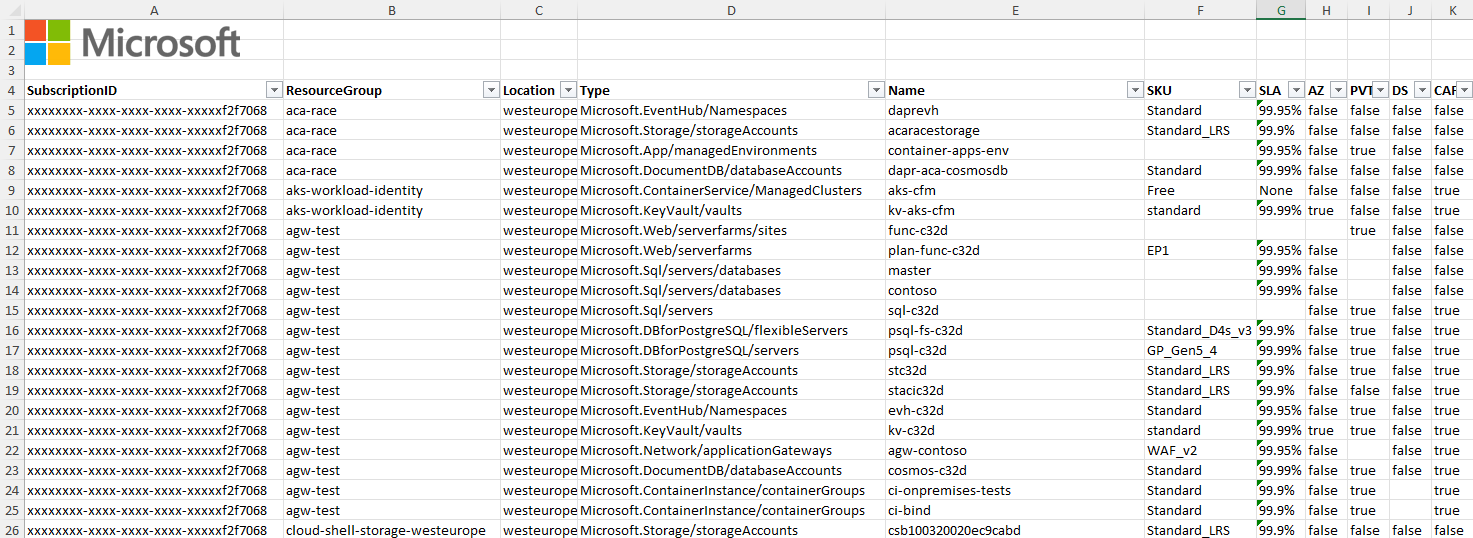With Azure Quick Review (azqr) you can quickly make a High Level Assessment of an “Azure Subscription” or “Resource Group”.
You can expect the following information as a result in the form of an Excel table:
SLA: current expected SLA
Availability Zones: Checks whether the service is protected against zone failures.
Private Endpoints: Checks whether the service uses private endpoints.
Diagnostic Settings: Checks whether diagnostic settings are configured for the service.
CAF naming convention: Checks whether the service conforms to the CAF naming convention.
The Excel table will look like this.

Tried it out briefly in my test environment. We download the installation file for Windows from the Github website of this AZQR project. You can find the releases here and the version 2.4.1 here.
Download and execution of Azure Quick Review
You then execute the downloaded file. Before you can do this, you have to register your Powershell session with Azure. The easiest way to do this is with this command.
az login --scope https://management.core.windows.net//.defaultNow you can generate the report. Use the following command “azqr-windows-latest-amd64.exe -s /. The command below is for my test subscription ID, so you have to change it.
azqr-windows-latest-amd64.exe -s /613874b9-8e33-449a-b9be-aa82d4de0631In the following you can see the fast process.

Output of the Azure Quick Review
The report from my test environment from Azure Quick Review is of course not very meaningful.

SKU: Stock Keeping Unit – These are article numbers and are often used in the Azure environment to denote variants / different sizes / different performance of products.
SLA: SLA for the instance in the current configuration. Service Level Agreement, i.e. the service level promised by the supplier (availability / response times / …).
AZ: True, if the instance supports Availability Zone
PVT: True if the instance has a private IP address.
DS: True if diagnostic settings are enabled for the instance.
CAF: True if the instance is compatible with the Cloud Adoption Framework naming convention.
Access the German version to this solution with new features here and learn about the 5 Why’s here.






